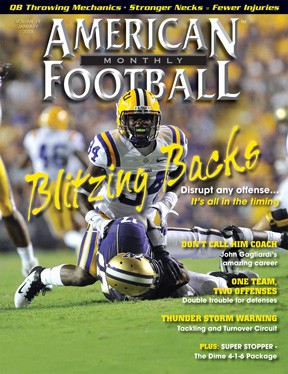Article CategoriesAFM Magazine
|
Legendary Leader – John Gagliardi retires after 64 years, 489 wins and countless changed lives.by: Bo Carter© More from this issue Amos Alonzo Stagg coached college football for 57 years in the first half of the 20th century, winning a then-record 314 games. Bobby Bowden tallied 377 wins in his 44-year coaching career at Samford, West Virginia and Florida State. Eddie Robinson coached Grambling for 55 years and won 408 games. John Gagliardi bettered them all. In a coaching career that spanned 60 seasons at the helm of Division III St. John’s University in Collegeville, Minnesota, and four prior seasons at Carroll College in Montana, Gagliardi’s teams were victorious 489 times in 638 games played, making him the winningest coach in college football history. When he retired, at age 86, after the 2012 season, he left a record that may never be broken. Gagliardi also left his mark on the thousands of student athletes who he coached. Whil....The full article can only be seen by subscribers.
|
|
|||||||
| HOME |
MAGAZINE |
SUBSCRIBE | ONLINE COLUMNISTS | COACHING VIDEOS |
Copyright 2025, AmericanFootballMonthly.com
All Rights Reserved





